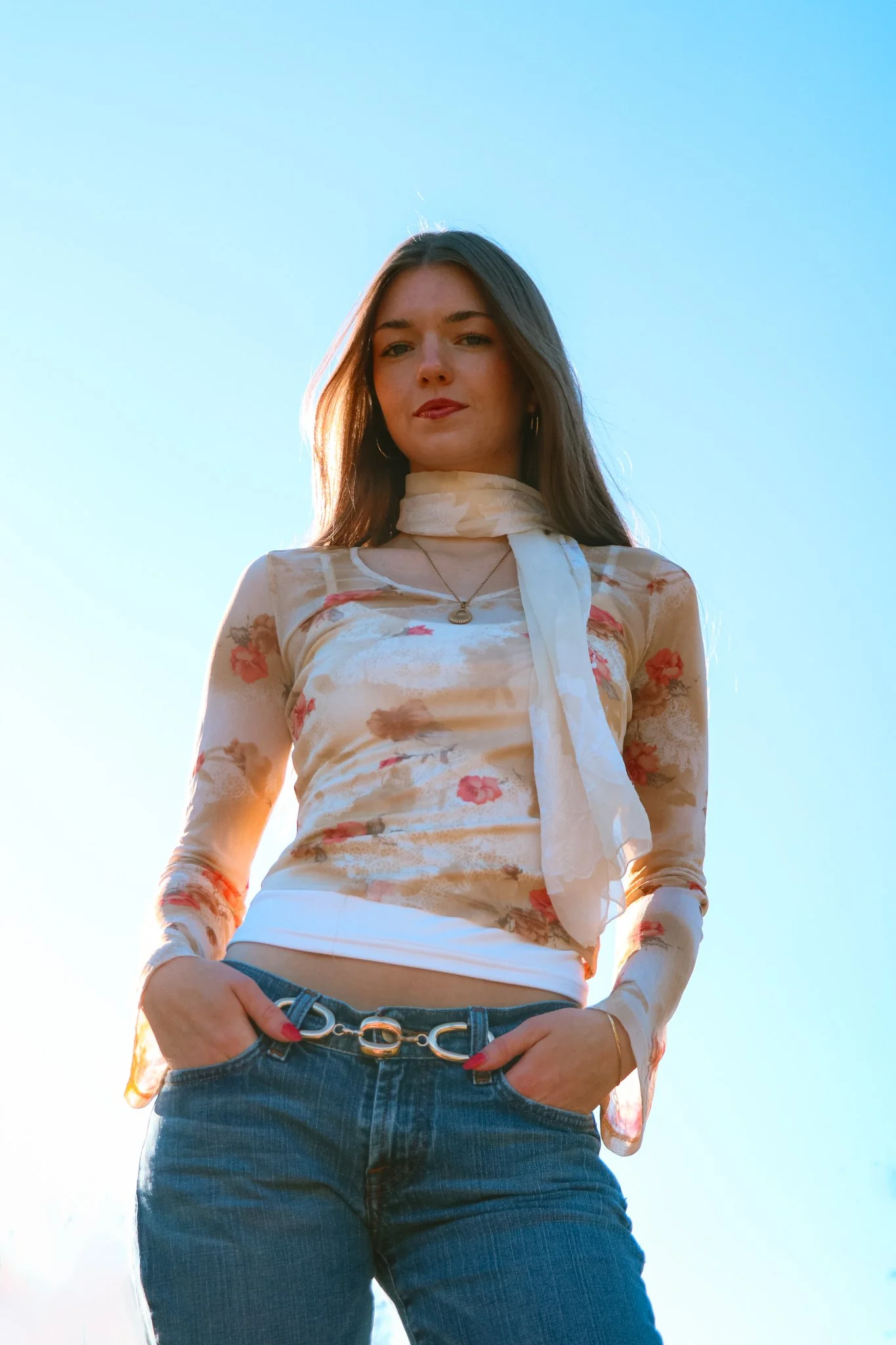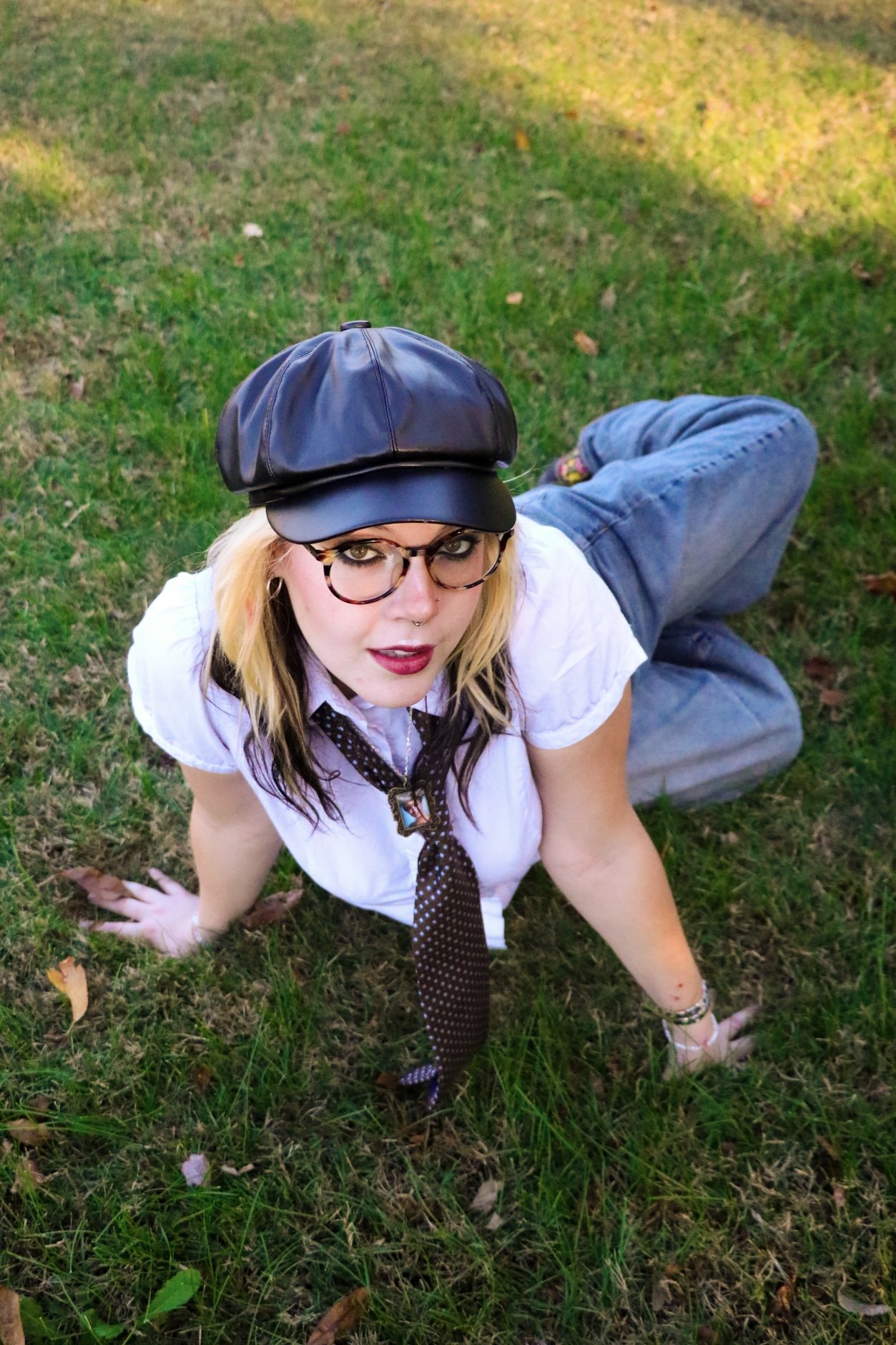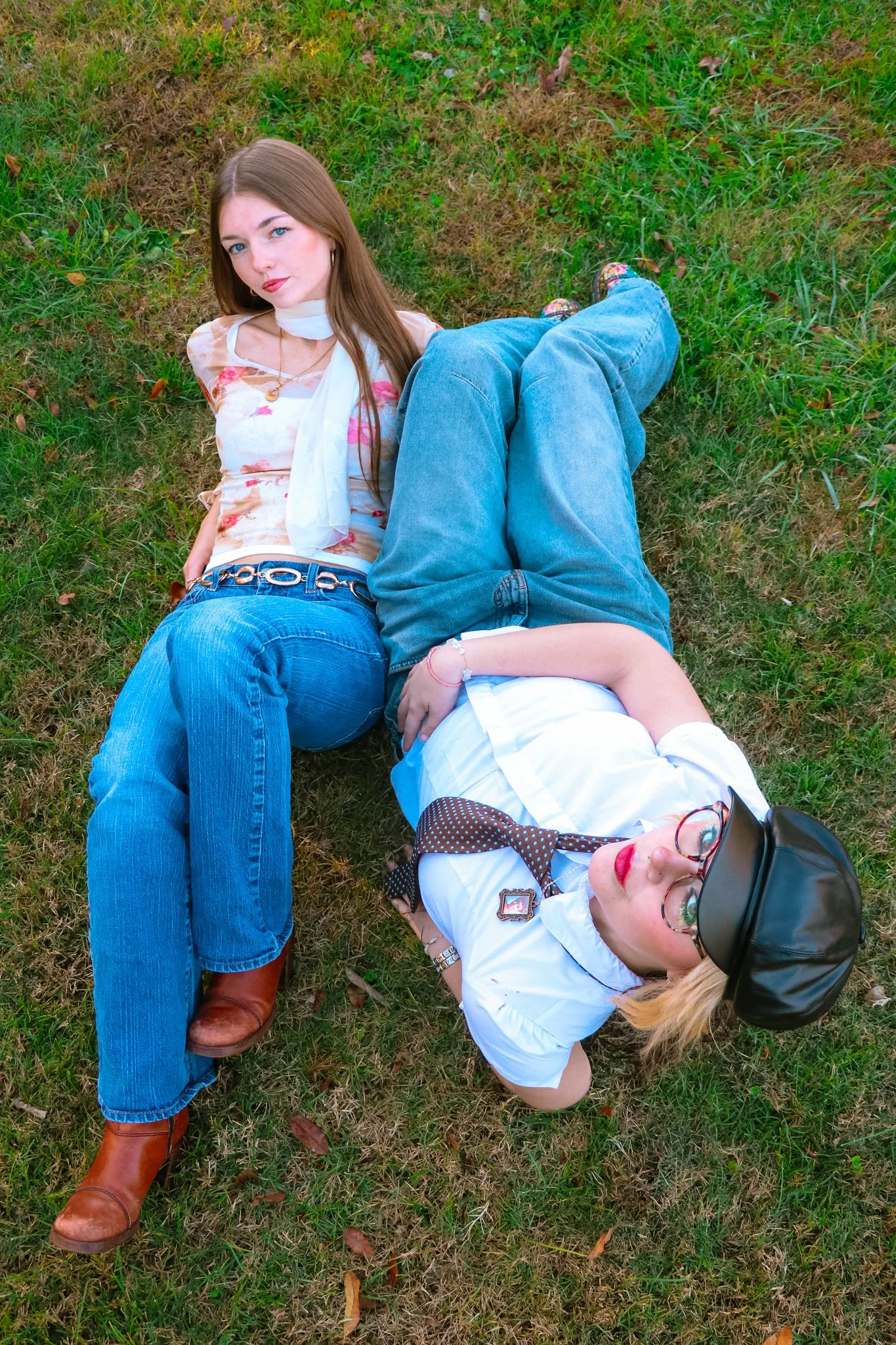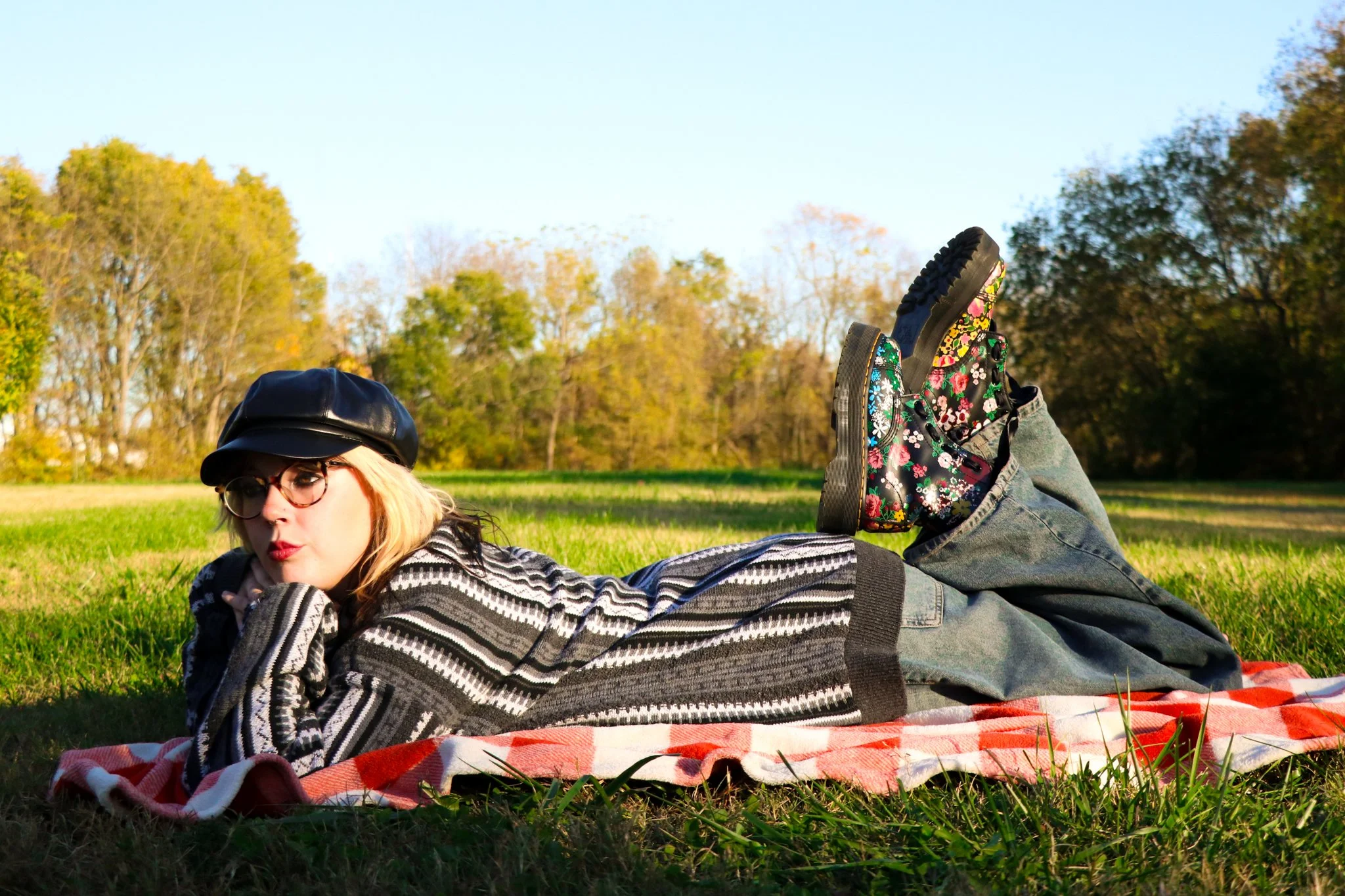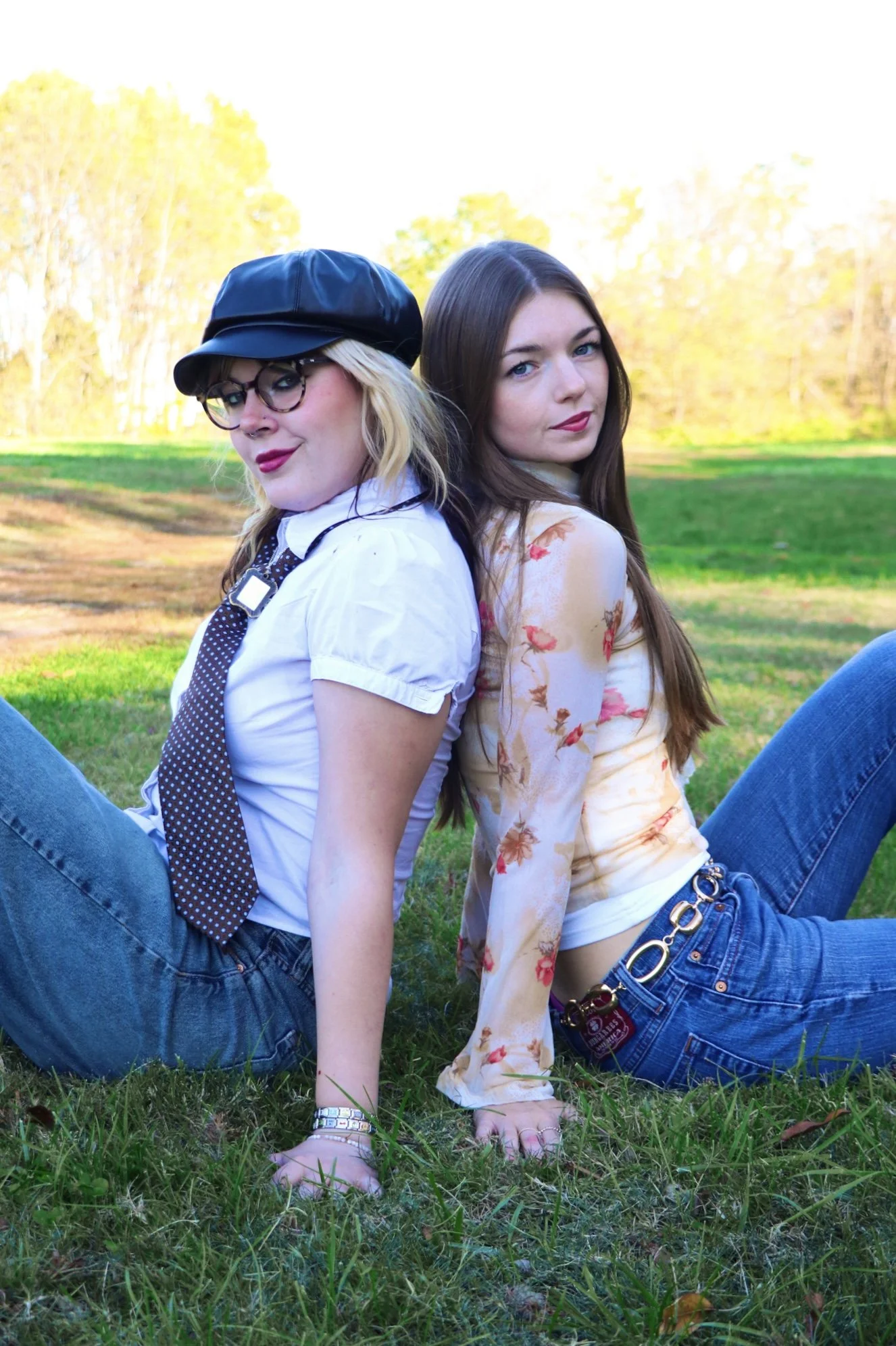OOTD: A Festival Fit Check
Written by: Candice Dalton
Photography by: Jenna Brown
Modeled by: Ashlyn Sorrells, Kait Patton, Candice Dalton, & Ruby Morales
Festival fashion trends continue to boom as festivals become more common around the globe. While festivals date back to ancient times, Woodstock 1969 created a pivotal shift in the culture of music festivals everywhere. Woodstock ‘69 was a festival that represented symbols of love, anti-war, and peace—the message of “love not war" was presented through fashion statements of event goers. After Woodstock ‘69, the popularity of music festivals continued to grow and the fashion trends of each decade succeeding the Woodstock festival are prevalent in today’s current festival fashion trends.
Beginning in the late ‘60s-‘70s, when Woodstock ‘69 occurred, there was growing influence from music artists like Fleetwood Mac, Janis Joplin, Grateful Dead, and other artists of the “hippie” influence. This is where trends of “free the nipple”, crochet tops, tie-dye, and patchwork began to surface. Paired with the free-spirited clothing trends were the anti-war symbols of peace; political messages acted as statement pieces at music festivals in the ‘60s-‘70s. Later into the ‘70s, trends began to shift toward leather jackets, metal studs, and Dr. Martens–the beginning of the punk-rock era. The punk-rock era was pivotal for new forms of self-expression and fashion pieces beginning to surface. At the time, punk rock was a genre that acted as a statement of rebellion and difference, steering itself away from societal norms.
Continuing to the era of influential pop, the ‘80s, a time for carefree expression and a new era of fashion. The fashion choices of the ‘80s were noticeably bold-bold colors, jewelry, and hairstyles. Influential artists like David Bowie, Cyndi Lauper, and Ozzy Osbourne are representative of this decade's fashion and boldness–certainly a time that won’t go unnoticed. Jumping forward to the ‘90s, where the “teenage dirtbag” looks gained popularity, Kurt Cobain was of large influence during this time and fashion trends mirrored his everyday look. Pictures from Glastonbury Festival of the ‘90s show eventgoers wearing baggy everything. If your pants, jacket, and shirt weren’t two sizes too big, well, you were doing something wrong.
The early 2000s is where festivals started to see a significant shift. The growing popularity of festivals made them more commercialized and fashion started to revolve more around the festival itself, rather than the music and artists. The circulating festival trends of this time consisted of the “boho chic” influence–this looked like flower headbands, big belts, and flowy bottoms. People watching these festivals, not those going to the festival, were almost more invested in what the celebrities in attendance were wearing than the music being played.
Today, festival fashion trends are certainly recycled from past decades. While old trends have been cycled, there has been a rapid acceleration in the circulation of festival fashion trends and general fashion trends. The mass influence from social media has changed the rate at which trends are coming and going. Festival fashion trends used to be fairly stagnant throughout an entire decade, and now we are seeing trends change yearly, if not quicker. In the last few years, Dr. Martens, outfits of the “hippie” influence, and the “teenage dirtbag” esque trends have resurfaced and gained popularity amongst festivalgoers. Paired with these outfits are recurring statements of rebellion, anti-war, and “love not war” or “love not hate”. Performers and eventgoers, much like at Woodstock ‘69, use their platforms to spread political awareness and do it in a fashionable way.
Music festivals have been and continue to be a space to circulate trends and spread awareness. While trends have and will continue to change, think about how you can sustainably evolve with trends for your festival wardrobe.

